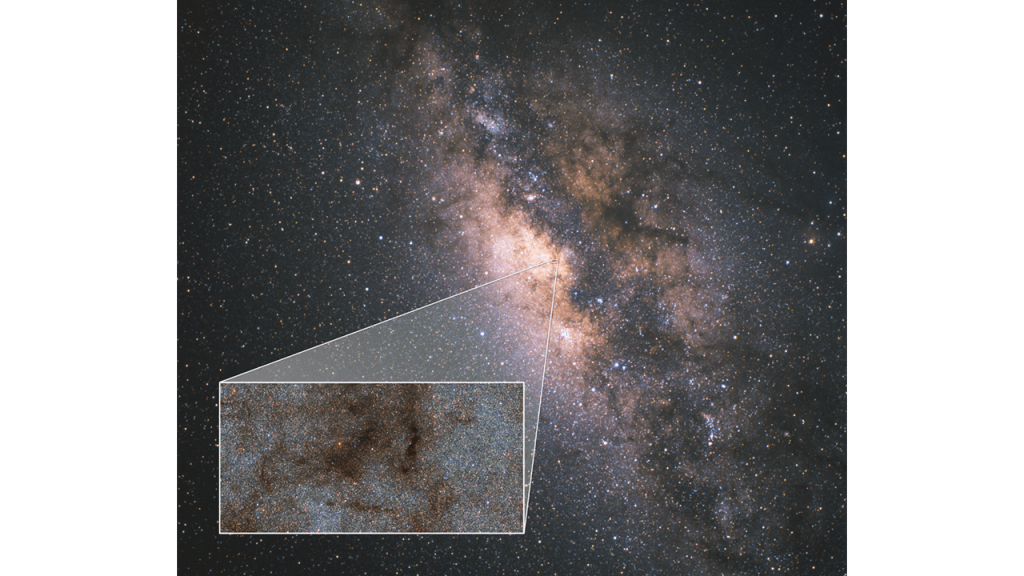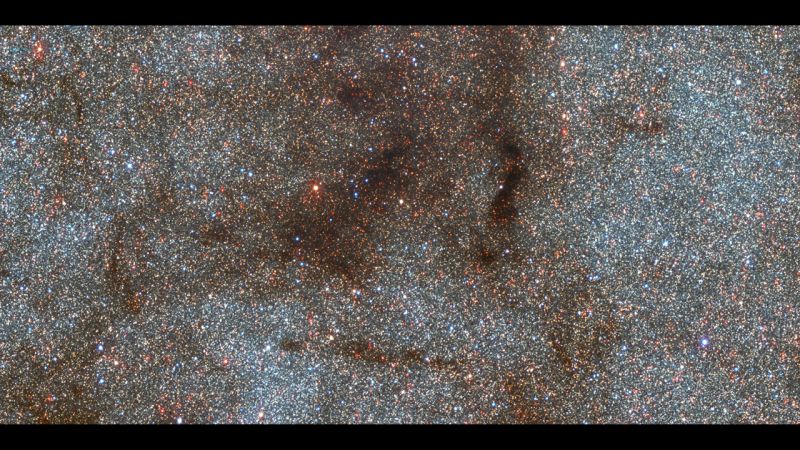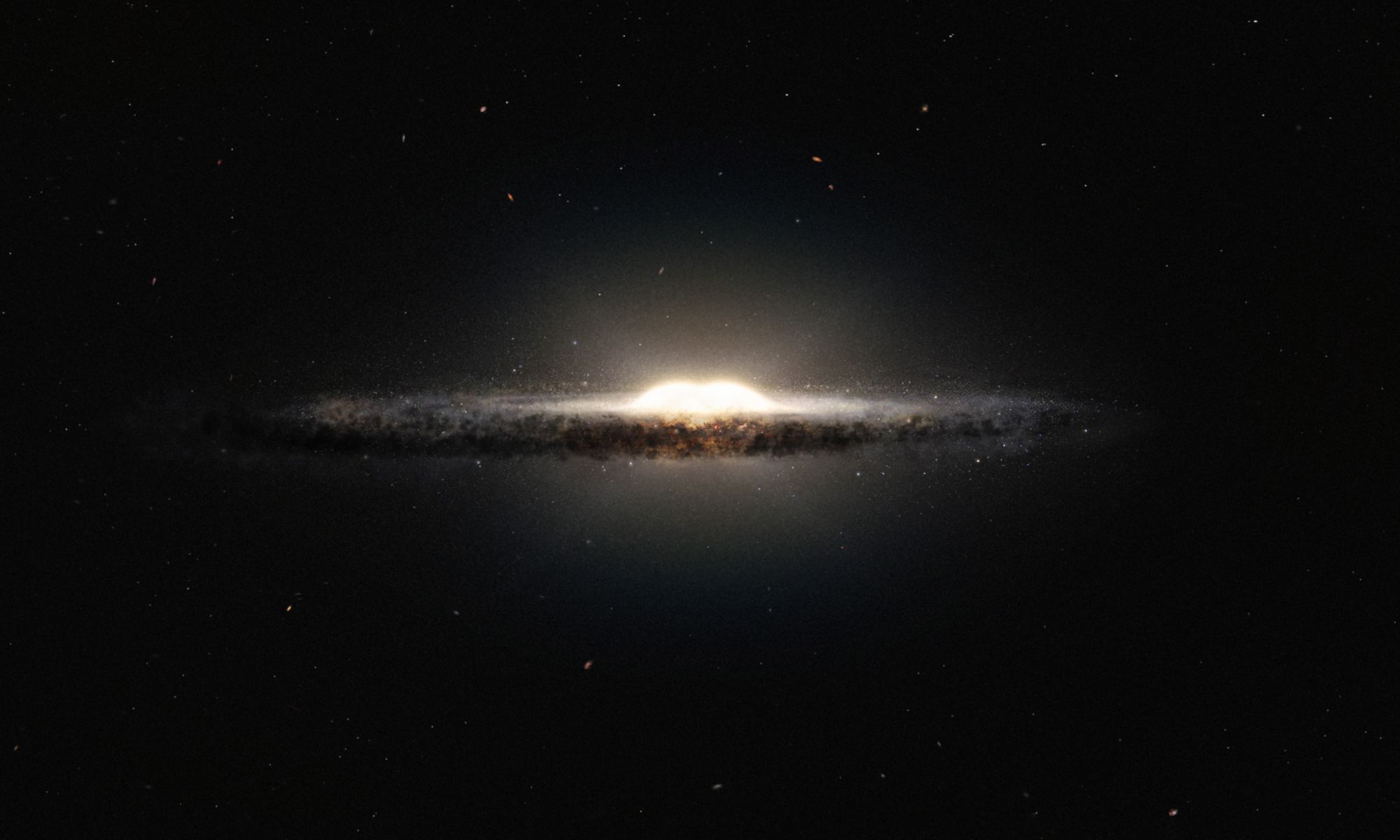Like other spiral galaxies, the Milky Way has a bulging sphere of stars in its center. It’s called “The Bulge,” and it’s roughly 10,000 light-years in radius. Astronomers have debated the bulge’s origins, with some research showing that multiple episodes of star formation created it.
But a new survey with the NOIRLab’s Dark Energy Camera suggests that one single epic burst of star formation created the bulge over 10 billion years ago.
The Milky Way is a massive structure, spanning between 170,000 and 200,00 light-years. It’s uncertain how many stars it contains with estimates ranging from 100 billion to 400 billion. It likely contains a similar number of planets.
Our Solar System is located in the Milky Way’s Orion Arm, about 27,000 light-years from the galactic center. From our vantage point, the Milky Way looks like a vast hazy band of light. But thanks to modern astronomy, we know a lot more detail about the Milky Way’s morphology.

We know that the Milky Way is a rotating disk with spiral arms. We know that there’s a supermassive black hole at the center called Sagittarius A*. And we know that while the disk as a whole is flattened out, the central bulge is different. It’s kind of like two fried eggs with a yolk sticking out from the top and bottom.
How the bulge of stars formed has been an unanswered question. There’s evidence that it grew over billions of years as more and more stars formed. Some astronomers have argued that it formed during two distinct bursts of star formation, one about 10 billion years ago and one about 3 billion years ago.
“Something different happened in the bulge.”
Michael Rich, Co-Principal Investigator, University of California, Los Angeles.
“Many other spiral galaxies look like the Milky Way and have similar bulges, so if we can understand how the Milky Way formed its bulge, then we’ll have a good idea for how the other galaxies did too,” said co-principal investigator Christian Johnson of the Space Telescope Science Institute in Baltimore, Maryland. Johnson is the lead author of one of the papers explaining these new results. The paper is titled “Blanco DECam Bulge Survey (BDBS) II: project performance, data analysis, and early science results.” It’s published in the Monthly Notices of the Royal Astronomical Society.
A new survey says that the stars in the 1,000 light-year center of the galaxy formed in one epic event about 10 billion years ago. At that time, a massive amount of gas fell into the central region, triggering all the star birth. All that gas may have been primordial material drawn into the center, or it may have come from merging with another smaller galaxy.
These results come from a Dark Energy Camera (DECam) survey of about 250 million stars. The survey focused on the ultraviolet light from the so-called Red Clump stars. Researchers were able to analyze the chemical composition of those stars.

CREDITS: Milky Way photo: Akira Fujii; Inset photo: CTIO/NOIRLab/NSF/AURA/STScI, W. Clarkson (UM-Dearborn), C. Johnson (STScI), and M. Rich (UCLA)
Typically, astronomers analyze a star’s chemical composition using spectroscopy. That can be a painstaking process since only a handful of stars can be analyzed at once. But in this DECam Bulge Survey astronomers were able to analyze many more at once. A total of 70,000 stars in the bulge were analyzed.
“This survey gives us a big picture view of the bulge in a way that many previous surveys have not been able to do,” added co-author Caty Pilachowski of Indiana University in Bloomington, Indiana.
A critical property of stars is their metallicity. In astronomy, metallicity refers to the abundance of elements heavier than hydrogen and helium. If a population of stars has the same metallicity, they’re likely the same age and may have formed from the same body of material. And stars with higher metallicity are older than stars with lower metallicity because heavier elements can only have been created in previous generations of stars.
But the stars in the Bulge are a bit difficult to figure out.

They appear to be younger than they are, and they contain about the same amount of metals as the Sun. But the Sun is only about 4.5 billion years old, and the Bulge stars are older. The Sun has a higher metallicity because it’s young; it was formed from material that had already been through cycles of star-birth and death, which enriched its parent material with heavier elements.
The question is, why do these older stars in the Bulge have such high metallicity?
“Something different happened in the bulge. The metals there built up very, very quickly, possibly in the first 500 million years of its existence,” said co-principal investigator Michael Rich of the University of California, Los Angeles.
If stars form over a longer period of time, they should exhibit different levels of metallicity. If they formed all at once, their metallicity levels should be similar. The DECam survey found that the stars within 1,000 light-years of the galactic center all had the same average metallicity. That suggests that they all formed in one unified episode of star birth.
The data from the survey suggests that that episode of star birth was about 10 billion years ago.
“Our survey is unique because we were able to scan a continuous section of the bulge at wavelengths of light from ultraviolet to visible to near-infrared. That allows us to get a clear understanding of what the various components of the bulge are and how they fit together,” said Johnson.
More:
- Press Release: NEW SURVEY FINDS THAT SINGLE BURST OF STAR FORMATION CREATED MILKY WAY’S CENTRAL BULGE
- New Research: Blanco DECam Bulge Survey (BDBS) II: project performance, data analysis, and early science results
- New Research: The Blanco DECam bulge survey. I. The survey description and early results
- Universe Today: The Milky Way is Already Starting to Digest the Magellanic Clouds, Starting With Their Protective Halos of Hot Gas


“And stars with higher metallicity are older than stars with lower metallicity because heavier elements can only have been created in previous generations of stars.”
Isn’t it the opposite? Stars with lower metallicity are older?